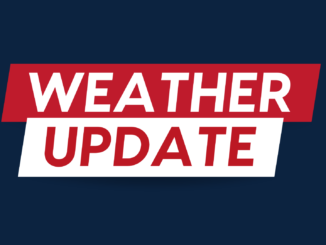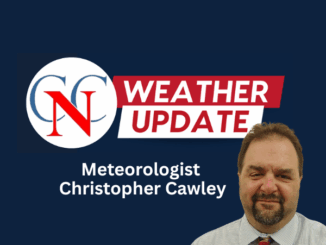
Why Knowing 2025 Life Insurance Eligibility Criteria Matters For You
Life insurance today sits at an interesting crossroads. Families are dealing with higher living costs, more people are working gig or contract jobs, and long-term illnesses linked to lifestyle habits are becoming common. All of this shapes how insurers think about risk and who qualifies for coverage.
Eligibility is a factor that needs attention when you consider that overall policy participation is in decline. Indeed, CNBC recently highlighted data that shows that life insurance policy purchases have seen a dip over the last decade. In 2011, 63% of American consumers had a life insurance policy. Meanwhile, in 2025, that percentage sits at 51%.
Thus, it’s key that everyone understands where they stand when it comes to being eligible for insurance. Let’s explore this further today.
The Typical Eligibility Rules for Life Insurance
As of November, there aren’t any significant federal law changes that affect life insurance eligibility in America. That said, it always helps to understand the factors that underwriters evaluate when an application for insurance is received. Here’s a breakdown of the most common life insurance requirements still in use in 2025:
Age, Height, and Weight
Age is one of the strongest eligibility and pricing determinants. Younger applicants typically get more favorable rates. As you get older, premiums rise steeply because the risk of mortality increases. Likewise, height and weight are other key demographic details that are noted.
Health and Medical History
Underwriters examine your personal health history (existing conditions, past illnesses), your family’s medical background (such as heart disease or cancer), and your current vital signs (blood pressure, BMI). According to 1891 Financial Life, you may also be requested to take a medical exam to gain a more updated picture of your health.
Lifestyle Risks
Lifestyle plays a big role: smoking or use of nicotine typically classifies an applicant in a “smoker” risk category, which carries a significant premium uplift.
Financial Underwriting
Insurers want to make sure the coverage amount makes financial sense relative to your income and net worth. They may check income, debt, and sometimes credit history to verify that the requested face amount is justifiable.
Risk Classification and Rating Classes
Once underwriters gather all the relevant information, you are placed into a risk class (or “rate class”). Typical U.S. classes include Super Preferred (very low risk), Preferred Nonsmoker, Standard Plus, Standard, Smoker classes, and substandard (sometimes called “table rated”) for higher-risk applicants.
Underwriting Variants
- Full Underwriting: Traditional method; involves medical exams, detailed medical history, and possibly doctor statements.
- Accelerated Underwriting: A growing trend; no medical exam is required. Instead, underwriters rely on health questionnaires, prescription history, credit or driving records, and public data.
- Guaranteed Issue and Simplified Issue: For certain policies (especially small, final-expense ones), you might skip the exam altogether. These policies often come with higher premiums and limited coverage.
Fraud and Information Verification
Underwriters often cross-check applications with databases like MIB (formerly Medical Information Bureau) to spot omissions or misrepresentations.
Eligibility Requirements May Slowly Evolve With Health Trends
A report from McKinsey & Company found that if there’s one thing Gen Z and Millennials care about, it’s wellness. They highlight that 56% of Gen Z say fitness is a very high priority, and TikTok accounts like FitTok amass over 64 billion views from health-focused content.
Eligibility rules today are becoming far more connected to lifestyle choices and digital data than ever before. Insurers are starting to value real-time health behavior and fitness habits, sleep consistency, and preventative checkups, which now influence how attractive a person looks on an application.
Applicants who regularly take care of their health often qualify for fewer medical exams and lower premiums. This trend signals a broader move toward underwriting that encourages long-term wellness instead of reacting only to old records.

Knowing Eligibility Status Makes Getting Your First Policy Easy
Understanding where you stand in terms of eligibility takes the stress out of buying your first life insurance policy. Most people assume the process is complicated, but knowing the basic criteria we discussed earlier puts you in control right away.
Financial advisors regularly point out who benefits the most from starting early. According to Martin A. Scott, founder of a financial advisory firm, life insurance is ideal for married couples, business owners, and anyone with dependents. It’s an inexpensive way to ensure your loved ones are taken care of, says Jarrod Sandra, an owner of another wealth management firm.
When you understand ahead of time that insurers look at stability, responsibility, and long-term planning, it becomes easier to decide when to start the application. It allows you to prepare documents in advance so that you can choose a policy that aligns with your current stage of life.
Eligibility Awareness Matters Even More for Certain Groups
Not everyone approaches life insurance from the same starting point. Some groups face extra gaps in awareness, expectations, or access, which means eligibility knowledge plays an even bigger role in their financial planning.
One example comes from recent findings by the Life Insurance and Market Research Association. Their data shows a noticeable gender divide in coverage. Only 49% of women own a life insurance policy compared to 55% of men.
This difference highlights how many women either underestimate their eligibility or delay getting evaluated altogether. This gap often has nothing to do with risk. It usually reflects uneven financial habits, competing responsibilities, and the assumption that coverage is either expensive or complicated to qualify for.
When women understand what actually determines eligibility, it becomes easier to see that many of the requirements are well within reach. Knowledge gives them more room to plan confidently, especially if they are managing a household, raising children, or running a business.
Frequently Asked Questions
1. What is the minimum income for life insurance?
There’s no strict minimum income for getting life insurance. Insurers just want to see that you earn enough to afford the premiums without strain. Even a modest income works fine, as long as the coverage amount makes sense for your financial situation.
2. What are the types of life insurance?
The two primary choices are term life and whole life. Term life covers you for a set period, while whole life remains in place for your entire lifetime and gradually builds cash value along the way. There are also versions like universal and variable life for anyone who prefers more flexibility or investment-style features.
3. What is the best age to get life insurance?
The sweet spot is usually your 20s or early 30s because premiums are at their lowest when you’re young and healthy. But honestly, the “best” age is whenever someone else financially depends on you or you want to lock in cheaper rates early.
Ultimately, eligibility rules for life insurance haven’t changed much in recent times. The typical factors we covered continue to remain important for insurers and will likely continue to be relevant in the years to come. That said, it’s important that you stay updated on changes when they happen. That way, if you ever choose to get a life insurance policy, you’re ready to apply on a moment’s notice.
(Contributed Content)
























